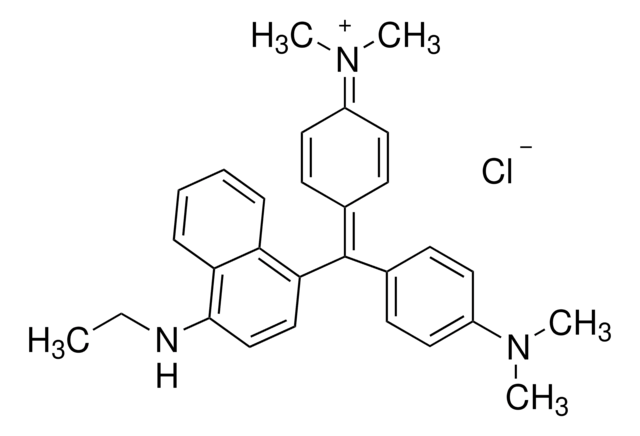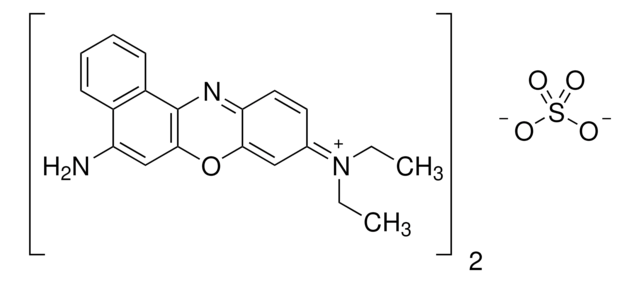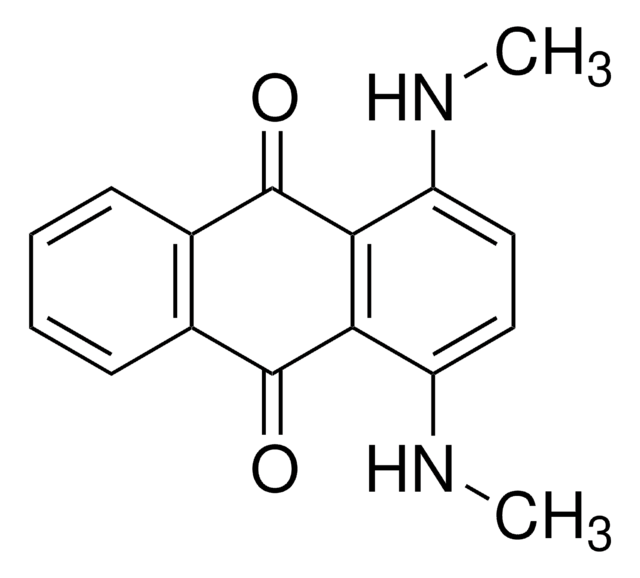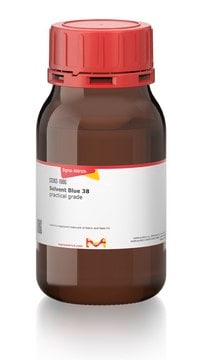230987
Victoria Pure Blue BO
Dye content 90 %
Synonyme(s) :
Basic Blue 7
About This Item
Produits recommandés
Forme
powder, crystals or chunks
Niveau de qualité
Composition
Dye content, 90%
Solubilité
95% ethanol: 0.1%, blue to very deep blue
λmax
619 nm
Application(s)
diagnostic assay manufacturing
hematology
histology
Température de stockage
room temp
Chaîne SMILES
[Cl-].CCNc1ccc(\C(c2ccc(cc2)N(CC)CC)=C3/C=C\C(C=C3)=[N+](\CC)CC)c4ccccc14
InChI
1S/C33H39N3.ClH/c1-6-34-32-24-23-31(29-13-11-12-14-30(29)32)33(25-15-19-27(20-16-25)35(7-2)8-3)26-17-21-28(22-18-26)36(9-4)10-5;/h11-24H,6-10H2,1-5H3;1H
Clé InChI
ROVRRJSRRSGUOL-UHFFFAOYSA-N
Vous recherchez des produits similaires ? Visite Guide de comparaison des produits
Description générale
Mention d'avertissement
Danger
Mentions de danger
Conseils de prudence
Classification des risques
Acute Tox. 3 Oral - Aquatic Acute 1 - Aquatic Chronic 1 - Eye Dam. 1
Code de la classe de stockage
6.1C - Combustible acute toxic Cat.3 / toxic compounds or compounds which causing chronic effects
Classe de danger pour l'eau (WGK)
WGK 3
Point d'éclair (°F)
Not applicable
Point d'éclair (°C)
Not applicable
Équipement de protection individuelle
Eyeshields, Gloves, type N95 (US)
Faites votre choix parmi les versions les plus récentes :
Déjà en possession de ce produit ?
Retrouvez la documentation relative aux produits que vous avez récemment achetés dans la Bibliothèque de documents.
Les clients ont également consulté
Notre équipe de scientifiques dispose d'une expérience dans tous les secteurs de la recherche, notamment en sciences de la vie, science des matériaux, synthèse chimique, chromatographie, analyse et dans de nombreux autres domaines..
Contacter notre Service technique













